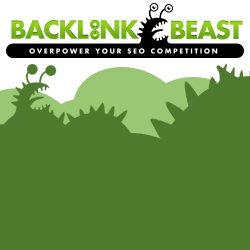How and why one web site gets ranked on the first page of a Google Search and another is on page 23 is a mystery to many small business people. And even experts will disagree on the details.
The exact formula used by Google is a closely guarded secret that changes from time to time. However enough is known to provide practical guidance to anyone who wishes to improve their overall ranking for any given keyword phrase.
There are a number of “on page” factors that matter a lot in this ranking process. This includes a proper set of meta tags, and the effective use of keywords on the page and if possible in the URL of the site. But once these basics are properly completed, the focus of search engine optimization shifts to the creation of backlinks.
A backlink is any link from another web property that connects (or links) to the target site. These can be links from other pages on the site, but most importantly include links for other web entities.
In the simplest way to think of it, you could consider each such link to be a vote. The site with the most votes wins.
And while in general this is true, it is only part of the story.
In the internet world, not all votes are created equal. Google in particular give the votes from your cousin Susie’s occasional blog far less value than a vote from the Smithsonian. Different web sites are assigned a page rank value which is a rough estimate of its standing in Google’s eyes as an authority. The higher the page rank, the more weight in has in the equation to rank a site.
In a recent report released by Ryan Deiss called the Authority Codes, he suggests that a single link from a site with a Page Rank of 5 is roughly equal to 555 links from sites with a page rank of 1.
While I cannot verify his information, I use the example to point out that the differences in page rank are significant.
That said, one backlink is better than no backlink, and the more links you get the better in terms of your sites ranking.
Because in the final analysis, the fight for a high ranking is very much like the old story of two hunters who have a bear chasing them. One stops to tie his shoe. The other says, Don’t be silly, you can’t outrun a bear. The other says, I don’t need to outrun the bear – I just need to outrun you.
In the page ranking game you are striving not to be the highest ranking site in the universe. You just need to be the highest ranking site in your particular niche. And for most local businesses that means being the top ranking butcher in Peoria, or St Louis or what ever geographical reference point that applies to you.
Now you still do want to get the high value links when you can. Among the better values are links from .edu or .gov sites. Educational institutions and governmental agency rankings carry more weight than those of a standard .com. Why? Because the search engines tend to assume that such links are more authoritative and less likely to be “Commercially” motivated.
Google also appears to look at the relevance of the referring source. If your site is all about elephants and you are getting links from a petting zoo and a veterinarian, the links will likely help you more than a set of links from a poker site and a car dealership.
These effects are magnified on some popular web sites like Squidoo. Many know that Squidoo carries a fair amount of weight due to its relatively high page rank. However, the real power of link from Squidoo come when the referring lens is part of a group of similar lens on the same topic.
Thus a link to the elephant site from a single lens on Google may have some decent weight, its likely to loose out by a single link from a lens that belongs to a group of circus animal related sites on Squidoo.
All of this conversation on backlinks is preliminary to a series of posts I will be adding to this blog from time to time in the coming few weeks.
I am in the final stages of preparing a report on back linking strategies.
With any luck I will have it available in the next day or two.
In the meanwhile, I invite you to leave any questions you have about backlinking in the comments section. Also feel free to copy this post in its entirety to repost on your own blog or to provide a link to this.
And one quick tip. When you leave a comment here you will be building a backlink to your web site. So it pays to comment in the form of gaining a backlink. Now I do moderate the comments on my blog, and will delete any spam or irrelevant comments. But if you ask a legitimate question, or leave a useful comment, you win a backlink.
[tags]backlinks improve pagerank, improve pagerank, backlink, backlinks, seo, authority codes, Ryan Deiss, Squidoo, meta tags, page ranking, [/tags]


